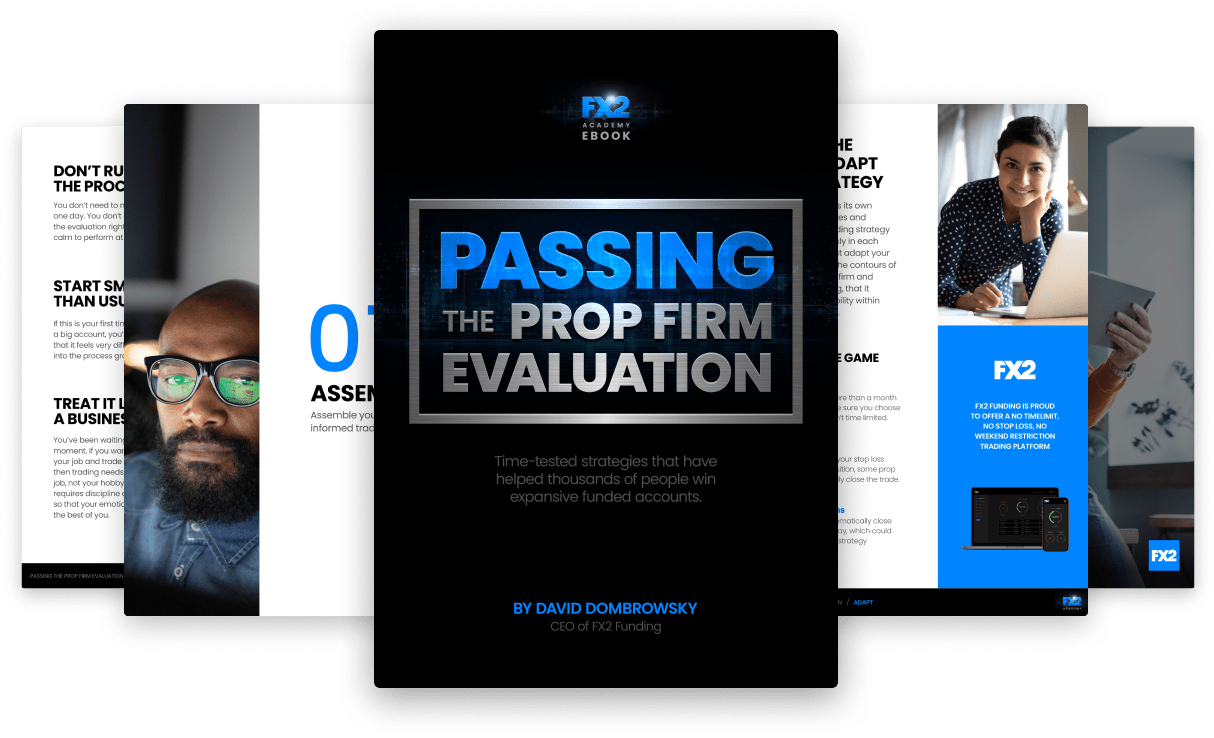Simple Steps to Develop a Customized Trading Approach
In the world of trading, a one-size-fits-all approach rarely leads to success. Each trader is unique, with different financial goals, risk tolerance levels, and market perceptions. This individuality necessitates the creation of a custom trading strategy tailored to fit specific needs and circumstances. A well-crafted trading strategy provides a structured framework for making informed decisions, helps manage risk effectively, and improves consistency in trading outcomes.
Why Customization is Crucial
Customization allows traders to align their strategies with their personal goals and risk appetite. It ensures that every decision made in the trading process is deliberate and fits into an overarching plan, reducing the likelihood of impulsive decisions driven by market volatility or emotional responses. Furthermore, a customized approach enables traders to leverage their strengths and address their weaknesses, enhancing overall trading performance.
Overview of Developing a Custom Strategy
Creating a custom trading strategy involves several critical steps: understanding your goals and risk tolerance, designing the strategy to fit these parameters, implementing robust risk management practices, and continuously testing, monitoring, and adjusting the strategy based on performance. Each step requires careful consideration and analysis to ensure that the strategy remains effective and relevant over time.
Understanding Your Goals and Risk
The foundation of any successful trading strategy is a clear understanding of your personal financial goals and risk tolerance. Without these, it's challenging to create a strategy that meets your needs and helps you achieve your objectives.
Establishing Clear Objectives
Begin by defining what you hope to achieve through trading. Are you looking to generate a steady income, build long-term wealth, or perhaps achieve short-term gains? Your goals will influence the type of strategy you develop and the markets you choose to trade. For example:
- Income Generation. If your goal is to generate regular income, you might focus on strategies that involve high-frequency trading or dividend-paying stocks.
- Wealth Building. For long-term wealth accumulation, you might adopt a more conservative approach, investing in stable, growth-oriented assets.
- Short-term Gains. If you're aiming for quick profits, day trading or swing trading strategies might be more appropriate.
Determining Risk Tolerance
Risk tolerance varies from trader to trader and depends on factors such as financial situation, investment experience, and psychological comfort with uncertainty. Assess your risk tolerance by considering:
- Financial Capacity. How much capital are you willing to risk without impacting your financial stability?
- Emotional Comfort. Are you comfortable with the possibility of significant losses, or do you prefer more stable, lower-risk investments?
- Experience Level. More experienced traders might be better equipped to handle higher-risk strategies.
Ensuring your strategy aligns with your risk tolerance is crucial for maintaining discipline and avoiding decisions driven by fear or greed.
Designing Your Strategy
Once you've established your goals and risk tolerance, the next step is to design a trading strategy that aligns with these parameters. This involves choosing a trading style, determining the appropriate timeframe, selecting assets, and conducting thorough market analysis.
Choosing a Trading Style and Timeframe
The trading style you choose will significantly impact the structure and execution of your strategy. Common trading styles include:
- Day Trading. Involves buying and selling assets within the same trading day. This style requires significant time commitment and quick decision-making.
- Swing Trading. Positions are held for several days to weeks, capturing medium-term market movements. It balances time commitment and potential profit.
- Position Trading. Involves holding positions for several months or even years, focusing on long-term trends. This style requires patience and a strong understanding of market fundamentals.
- Scalping. Involves making dozens or hundreds of trades in a single day to capture small price movements. It requires a high level of concentration and quick execution.
Choosing the right timeframe is equally important. Your timeframe should match your trading style and personal schedule. For instance, day traders might use minute-by-minute charts, while position traders might rely on daily or weekly charts.
Selecting Assets and Market Analysis
The assets you choose to trade will depend on your goals, risk tolerance, and trading style. Common asset classes include stocks, forex, commodities, and cryptocurrencies. Each asset class has its own characteristics and requires different approaches to analysis and strategy development.
Conducting Market Analysis
Effective market analysis is critical for making informed trading decisions. This involves:
- Technical Analysis. Analyzing historical price data and using indicators like moving averages, RSI, and MACD to identify trends and potential entry and exit points.
- Fundamental Analysis. Assessing economic indicators, financial statements, and market news to determine the intrinsic value of an asset.
For those interested in forex trading, understanding which currencies are most popular and heavily traded can provide valuable insights. Learn more about the most popular and most traded currencies.
Combining both technical and fundamental analysis can provide a comprehensive view of the market, helping you develop a more effective trading strategy.
Implementing Risk Management
Risk management is a crucial component of any trading strategy. Proper risk management helps protect your capital from significant losses and ensures that you can continue trading even after a series of setbacks. Here are essential risk management practices to implement in your custom trading strategy.
Setting Stop-loss Orders and Position Sizing
Stop-loss orders are vital tools for managing risk in trading. A stop-loss order is a predetermined order to sell an asset when it reaches a specific price, limiting the potential loss on a trade. Here’s how to effectively set stop-loss orders and determine position sizing:
- Determining Stop-loss Levels. Set your stop-loss levels based on your risk tolerance and the volatility of the asset. For example, if you are willing to risk 2% of your trading capital on a single trade, calculate the price point at which a 2% loss would occur and set your stop-loss order accordingly.
- Using Technical Indicators. Utilize technical analysis tools such as moving averages, support and resistance levels, and trend lines to determine optimal stop-loss levels. These indicators can help you identify logical points to exit a trade if the market moves against you.
- Adjusting Stop-loss Orders. As a trade progresses and the price moves in your favor, consider adjusting your stop-loss order to lock in profits. This technique, known as a trailing stop, can help maximize gains while protecting against reversals.
For a more detailed guide on setting stop-loss orders, you can explore the stop-loss order guide.
Position sizing is another critical aspect of risk management. It involves determining the number of units to trade based on the size of your trading account and your risk tolerance. Here’s how to approach position sizing:
- Calculate Risk per Trade. Decide the maximum amount of capital you are willing to risk on each trade. A common rule of thumb is to risk no more than 1-2% of your total trading capital on a single trade.
- Determine Position Size. Use the following formula to calculate the position size: Position Size = (Account Size * Risk per Trade) / (Entry Price - Stop-loss Price). This calculation ensures that your risk remains within acceptable limits regardless of the trade's outcome.
Monitoring and Adjusting Risk
Continuous monitoring and adjusting of risk are essential for maintaining a robust trading strategy. Here are some practices to ensure effective risk management:
- Regularly Review Trades. Periodically review your trades to assess whether your risk management strategies are effective. Analyze both winning and losing trades to identify patterns and areas for improvement.
- Adjust Risk Parameters. As your trading account grows or market conditions change, adjust your risk parameters accordingly. For example, you might increase your position size as your account balance increases, provided it aligns with your overall risk tolerance.
- Stay Informed. Keep up-to-date with market news and events that could impact your trades. Unexpected events can increase market volatility, requiring you to adjust your risk management strategies accordingly.
Testing, Monitoring, and Adjusting
A well-developed trading strategy requires thorough testing, continuous monitoring, and regular adjustments to remain effective. This iterative process helps refine your strategy and improve its performance over time.
Importance of Backtesting and Optimization
Backtesting is the process of testing a trading strategy using historical market data to evaluate its performance. Backtesting helps identify potential flaws and provides insights into how the strategy might perform in real market conditions. Here’s how to conduct effective backtesting:
- Collect Historical Data. Gather historical price data for the assets you plan to trade. Ensure that the data is comprehensive and covers various market conditions.
- Simulate Trades. Use the historical data to simulate trades based on your strategy’s entry and exit criteria. Record the results to analyze the strategy’s performance.
- Analyze Results. Evaluate key performance metrics such as win rate, average profit/loss per trade, maximum drawdown, and risk-reward ratio. Identify any patterns or weaknesses in the strategy.
- Optimize Parameters. Adjust the strategy’s parameters (e.g., stop-loss levels, position sizes) to improve its performance. Be cautious not to over-optimize, as this can lead to curve fitting, where the strategy performs well on historical data but poorly in live trading.
Keeping a Trading Diary and Regular Evaluation
Maintaining a trading diary is a valuable practice for monitoring your trading performance and emotional state. A trading diary helps you track your trades, analyze your decisions, and make informed adjustments to your strategy. Here’s how to keep an effective trading diary:
- Record Trade Details. Document essential details for each trade, including entry and exit points, position size, stop-loss and take-profit levels, and the rationale behind the trade.
- Note Emotional State. Record your emotional state before, during, and after each trade. Understanding how emotions influence your decisions can help you manage them better.
- Evaluate Performance. Regularly review your trading diary to evaluate your performance. Look for patterns in your trades, identify strengths and weaknesses, and adjust your strategy accordingly.
Ready to apply your custom trading strategy?
Visit FX2 Funding to explore funded programs and trading services.
Bottom Line
Customizing your trading strategy is essential for aligning your trading practices with your unique financial goals, risk tolerance, and market perceptions. A tailored approach allows for structured decision-making, effective risk management, and consistent trading outcomes. By understanding your objectives and risk tolerance, designing a strategy that fits your parameters, and continuously testing and adjusting based on performance, you can enhance your trading success. Embrace the iterative process of refining your strategy and leverage both technical and fundamental analysis to stay informed and adaptable in the ever-changing market landscape. Ready to elevate your trading game? Begin customizing your strategy today and see the difference it makes in your trading journey with FX2 Funding.








